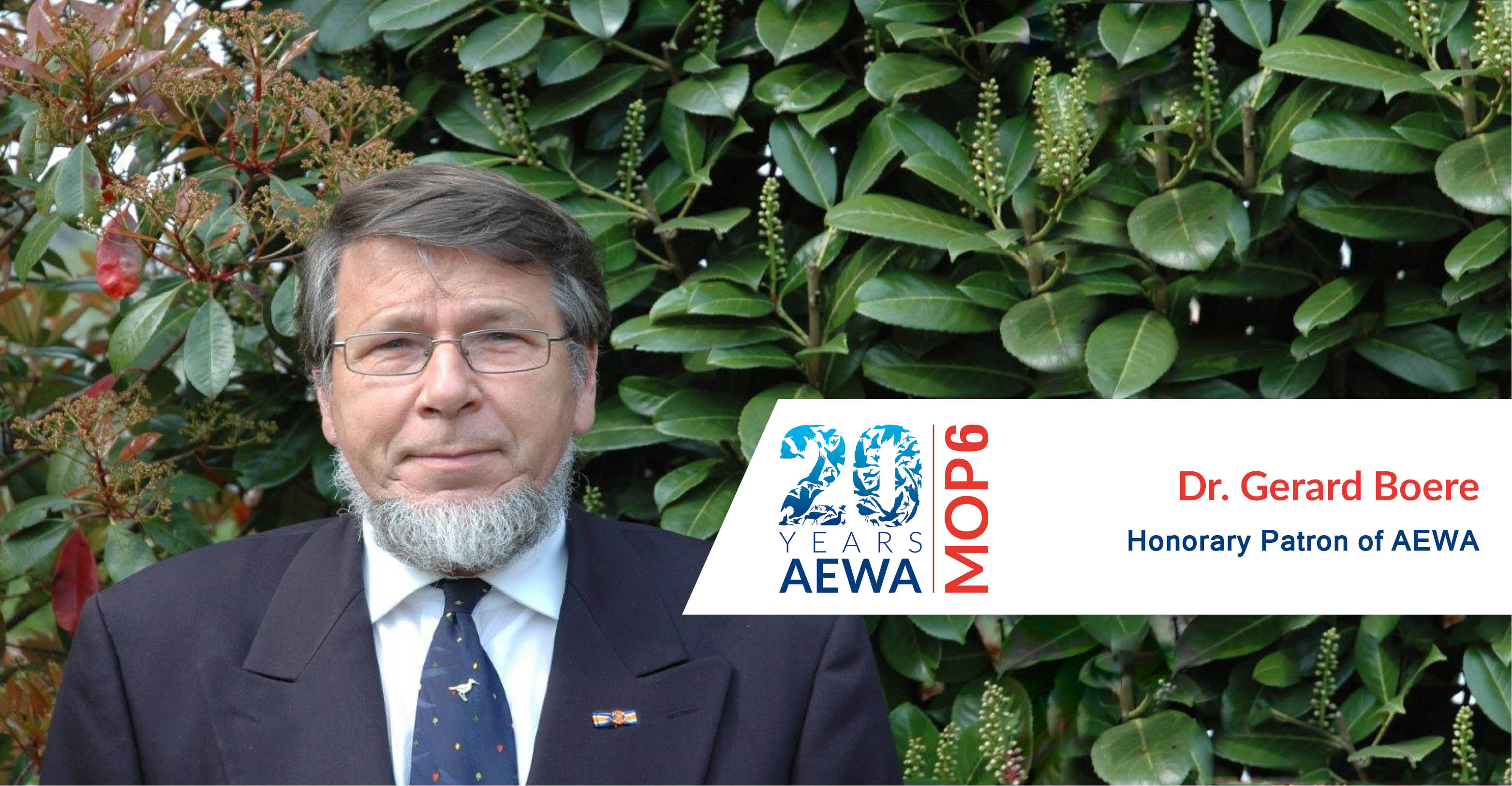People behind AEWA - Dr. Gerard C. Boere

Dr. Gerard C. Boere, Honorary Patron of AEWA
Bonn, 16 June 2015 - Migratory birds have been a life-time fascination for Gerard. With two school friends, when they were about 10 years old, he established a ‘bird and nature club’. Bird watching was their main activity, using a simple old bird guide. Studying zoogeography was a logical follow-up, with a focus on bird migration and specifically the importance of the Dutch Wadden Sea for millions of migratory waders. In those days this was probably an even more important issue than today, because of the political pressure to reclaim at least parts of the Wadden Sea. Gerard’s PhD studies (1971-1977) and his thesis on the Dutch Wadden Sea as a moulting area for Arctic waders brought him in contact with international conventions. Ramsar had already been in place a few years and the Bonn Convention and EU Bird Directive were in preparation. His work also took him to the USSR - the first time in 1976 - to attend a conference in Novosibirsk on migratory birds. There later followed many expeditions and visits in the period 1989-2002 and trying to persuade the Russian Federation to become an AEWA Party.
That early encounter with international conventions showed him the importance of having solid, non-bureaucratic international instruments as a means for people through which to meet regularly and agree, support and facilitate actions for conservation in everybody’s interest. This applies of course especially to the fascinating world of migratory birds with their flyways covering sometimes dozens of countries.
“The most memorable moment for me was of course when after years of work, the AEWA text was signed in The Hague in 1995 with the actual work starting in November 1999 at MOP1 in Cape Town. AEWA has over the years shown its ability to act in the way we wanted it to: as a practical tool for international cooperation working ‘on the ground’ conserving migratory waterbirds. It has grown steadily in the number of Parties and as a flyway conservation tool it has a high international profile, for example, at the Waterbirds around the World Conferencein 2004 in Edinburgh. Many governments, NGOs and international organizations have provided support to projects and programmes. For example the large GEF support, with substantial co-funding from e.g. Germany, for the ‘Wings over Wetlands’ programme stimulated AEWA’s role in Africa with ‘The Flyway Training Kit’ as another important and practical output.”
After 10 years’ service as head of flora and fauna conservation and research of the National Forest Service, from 1988 onwards he worked with other people on the development of the international conservation treaty, which finally became AEWA. This was both a challenge and an honour (for more details see the 15th anniversary book written by Gerard C. Boere)
If Gerard has to choose a single species protected by AEWA as his favourite, it is the Dunlin (Calidris alpina). An interesting species with complex taxonomy and migration routes. Their large flocks flying around or forming a dense ’carpet’ at a high tide roosts are a fascinating sight. They are still quite common, but even this species has a negative population trend. Gerard is no longer catching and ringing waders – he has turned his attention to land birds instead, mainly passerines, in the Netherlands. He is also training people to become licensed ringers and is chair of the Dutch Bird-Ringers Society.
Even after his early retirement in 2004, AEWA activities have still frequently featured in his life; for instance, he was one of the editors of the proceedings of the Waterbirds around the World conference. Similarly, for almost four years, Gerard chaired the Steering Committee of the ‘Wings Over Wetlands’ project focussing on AEWA implementation in Africa. He was involved in organizing the 15th Anniversary of AEWA and he also serves as chair of the Advisory Committee for the Wadden Sea Flyway Initiative. He completed his work there on 1 April 2015, bringing his working career to a neat conclusion, ending where it had begun 50 years ago in the Wadden Sea with its millions of migratory waterbirds, and now recognized internationally through its status as UNESCO World Heritage Site.
Last updated on 16 June 2015



